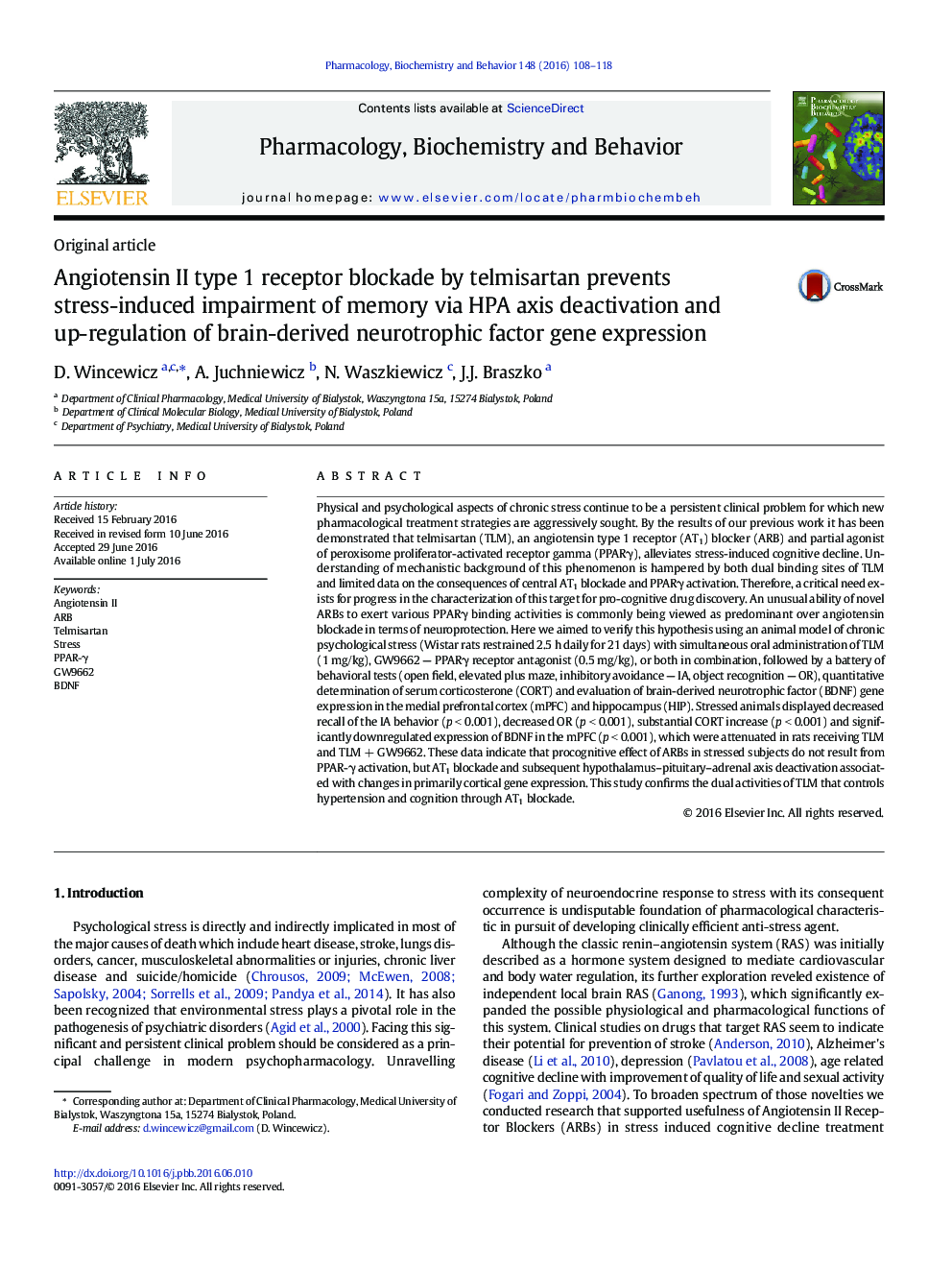| کد مقاله | کد نشریه | سال انتشار | مقاله انگلیسی | نسخه تمام متن |
|---|---|---|---|---|
| 2012657 | 1541838 | 2016 | 11 صفحه PDF | دانلود رایگان |

• AT1R and PPARγ are new targets for pro-cognitive drug discovery.
• Dual binding sites of telmisartan (TLM) exert AT1R blockade and PPARγ activation.
• Behavioral, hormonal and molecular effects of TLM and GW9662 are discerned.
• Insight into neuroprotective mechanism of TLM in stress reveal major role of AT1R.
• AT1R blockade in stress triggers HPA axis deactivation and BDNF gene upregulation.
Physical and psychological aspects of chronic stress continue to be a persistent clinical problem for which new pharmacological treatment strategies are aggressively sought. By the results of our previous work it has been demonstrated that telmisartan (TLM), an angiotensin type 1 receptor (AT1) blocker (ARB) and partial agonist of peroxisome proliferator-activated receptor gamma (PPARγ), alleviates stress-induced cognitive decline. Understanding of mechanistic background of this phenomenon is hampered by both dual binding sites of TLM and limited data on the consequences of central AT1 blockade and PPARγ activation. Therefore, a critical need exists for progress in the characterization of this target for pro-cognitive drug discovery. An unusual ability of novel ARBs to exert various PPARγ binding activities is commonly being viewed as predominant over angiotensin blockade in terms of neuroprotection. Here we aimed to verify this hypothesis using an animal model of chronic psychological stress (Wistar rats restrained 2.5 h daily for 21 days) with simultaneous oral administration of TLM (1 mg/kg), GW9662 — PPARγ receptor antagonist (0.5 mg/kg), or both in combination, followed by a battery of behavioral tests (open field, elevated plus maze, inhibitory avoidance — IA, object recognition — OR), quantitative determination of serum corticosterone (CORT) and evaluation of brain-derived neurotrophic factor (BDNF) gene expression in the medial prefrontal cortex (mPFC) and hippocampus (HIP). Stressed animals displayed decreased recall of the IA behavior (p < 0.001), decreased OR (p < 0.001), substantial CORT increase (p < 0.001) and significantly downregulated expression of BDNF in the mPFC (p < 0.001), which were attenuated in rats receiving TLM and TLM + GW9662. These data indicate that procognitive effect of ARBs in stressed subjects do not result from PPAR-γ activation, but AT1 blockade and subsequent hypothalamus–pituitary–adrenal axis deactivation associated with changes in primarily cortical gene expression. This study confirms the dual activities of TLM that controls hypertension and cognition through AT1 blockade.
Figure optionsDownload as PowerPoint slide
Journal: Pharmacology Biochemistry and Behavior - Volume 148, September 2016, Pages 108–118